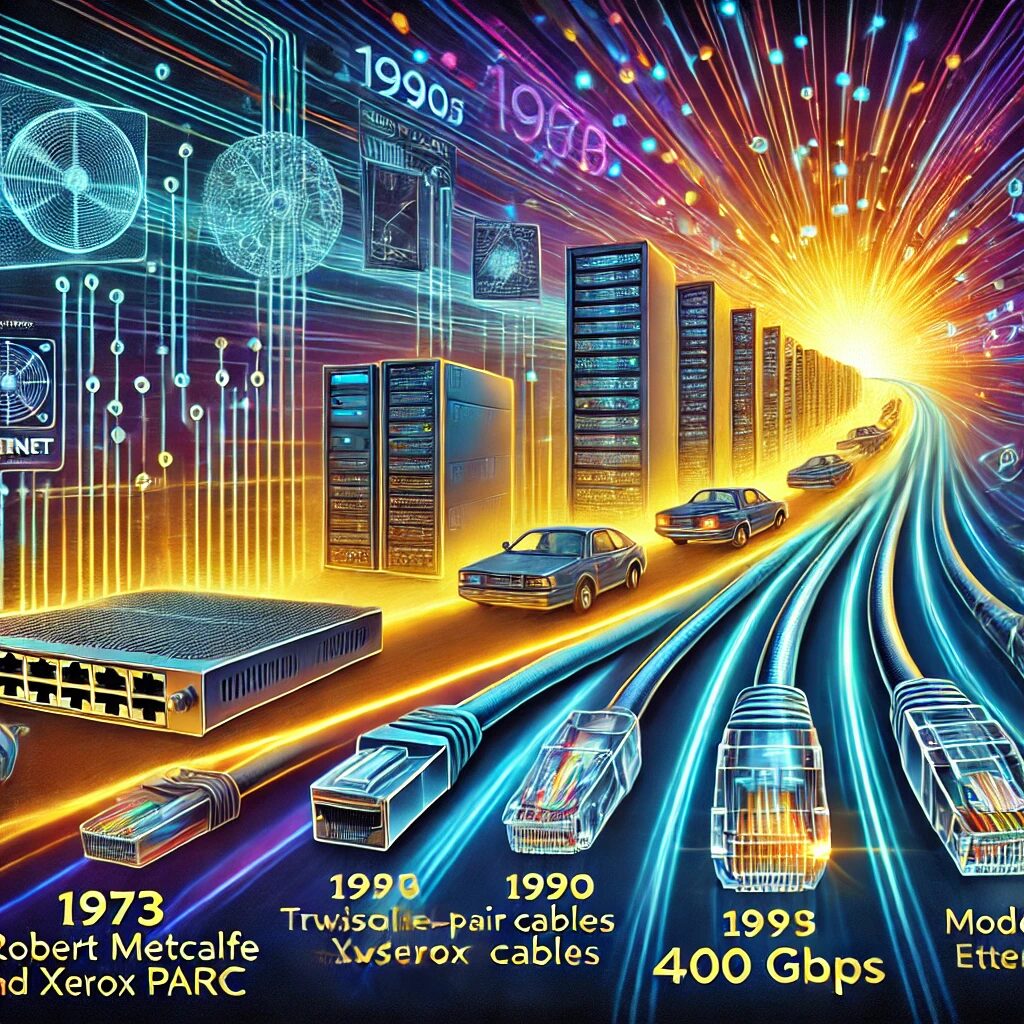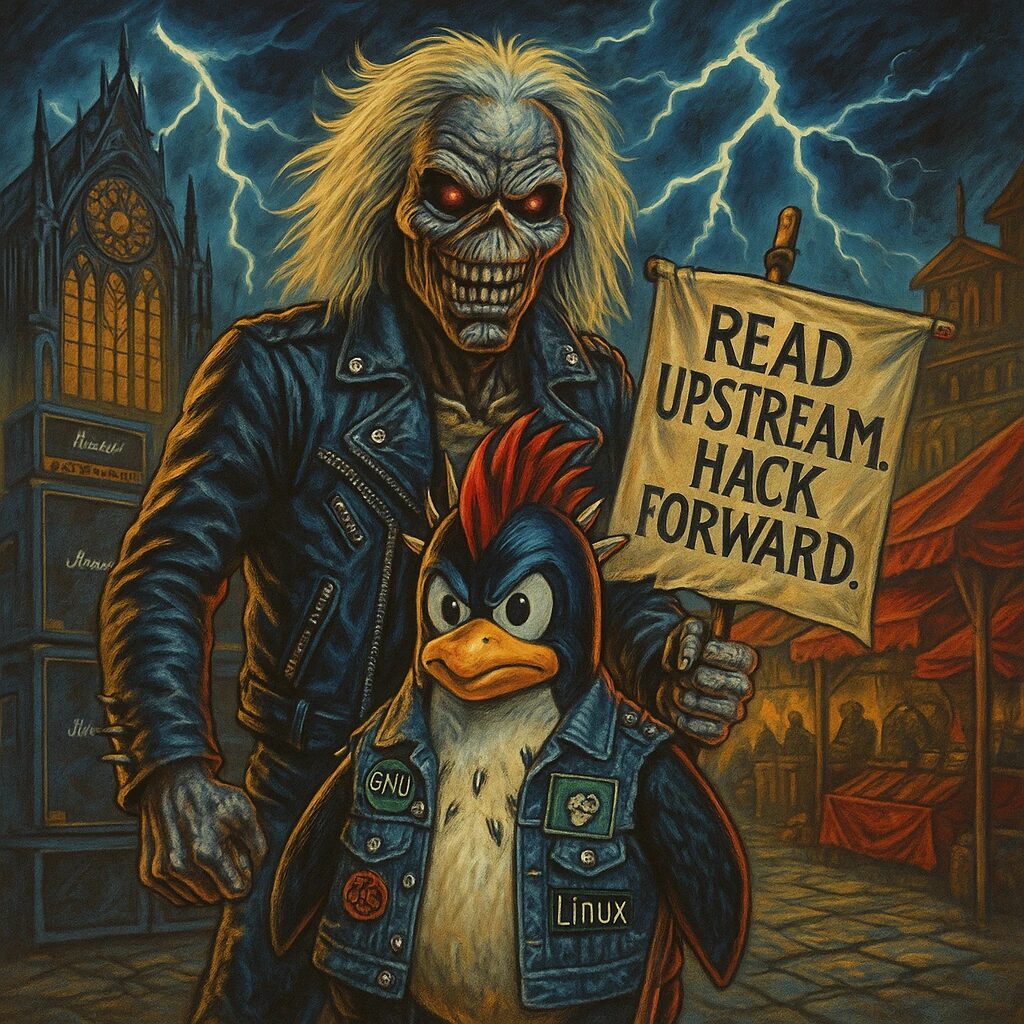The Technology That Connected the World
Imagine a world where computers couldn’t talk to each other. No shared files, no internet, no video calls. Hard to believe, right? That’s the world before Ethernet—a revolutionary invention that transformed how we connect, communicate, and collaborate. This is the story of Ethernet, a technology that started as a brilliant idea and became the invisible force powering our digital lives.
The Spark of Genius: Ethernet’s Humble Beginnings
The year was 1973, and Xerox’s Palo Alto Research Center (PARC) was buzzing with innovation. Among its brilliant minds was Robert Metcalfe, who had a bold vision: make computers communicate seamlessly. Inspired by Hawaii’s ALOHAnet, a wireless network, Metcalfe set out to create something faster and more reliable using cables.
With some coaxial cable (think of early TV cables), Metcalfe and his team developed Ethernet, which could send data at an astonishing speed of 2.94 Mbps. At the time, that was lightning-fast! In 1976, Metcalfe and his colleague David Boggs officially documented their invention, unknowingly laying the foundation for a technology that would change the world.
From Idea to Industry Standard: The Rise of Ethernet
The 1980s were a battleground for networking technologies. IBM had its Token Ring, and there was ARCNET, but Ethernet had something special: simplicity and affordability. To ensure Ethernet’s success, Xerox teamed up with Intel and Digital Equipment Corporation (DEC) in 1980 to release the first Ethernet specification. By 1983, Ethernet had an official stamp of approval with the IEEE 802.3 standard.
This move didn’t just put Ethernet on the map—it made it the map. Standardization meant any Ethernet product could work together, opening the door for a flood of innovation.
Ethernet’s Glow-Up: Faster, Smarter, Better
By the 1990s, Ethernet wasn’t just keeping up; it was speeding ahead. Twisted-pair cables replaced clunky coaxial ones, making networks more reliable and cost-effective. Then came Fast Ethernet in 1995, pushing speeds to 100 Mbps. Suddenly, businesses could transfer files and run applications at breakneck speed.
But the real game-changer? Ethernet switches. Before switches, networks worked like group phone calls—everyone heard everything. Switches made it possible for data to go directly to its destination, making networks faster and more private.
Gigabit Ethernet: Breaking the Speed Barrier
As the internet exploded in the early 2000s, Ethernet took a giant leap forward. Gigabit Ethernet (1,000 Mbps) became the new standard, making it possible to stream videos, share massive files, and run complex applications with ease.
Not long after, 10 Gigabit Ethernet emerged, taking data centers and enterprises to the next level. Meanwhile, Power over Ethernet (PoE) added a layer of magic by delivering both power and data through a single cable, simplifying setups for devices like security cameras and phones.
Today’s Ethernet: A High-Speed Superstar
Fast forward to today, and Ethernet is faster, smarter, and more essential than ever. Speeds of 400 Gbps are now achievable, with researchers working on pushing it even further. Whether it’s enabling cloud computing, powering artificial intelligence, or supporting 5G networks, Ethernet is at the heart of our digital world.
The Future: Ethernet’s Next Adventure
What’s next for Ethernet? With the rise of smart cities, autonomous vehicles, and the Internet of Things, Ethernet is poised to play an even bigger role. It’s constantly evolving to meet the demands of a connected world, proving time and again that it’s more than just a technology—it’s a movement.
Why Ethernet Matters
Ethernet isn’t just a tool; it’s a story of innovation, perseverance, and vision. It took a simple idea—connecting computers—and turned it into a technology that connects people, businesses, and entire industries. From your home Wi-Fi to the largest data centers on Earth, Ethernet is the quiet hero that keeps the world running.
So, the next time you send an email, stream a movie, or video call a loved one, take a moment to thank Ethernet—the technology that made it all possible.


